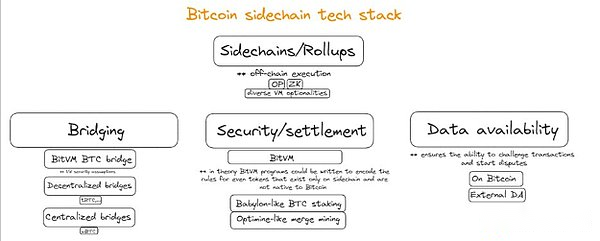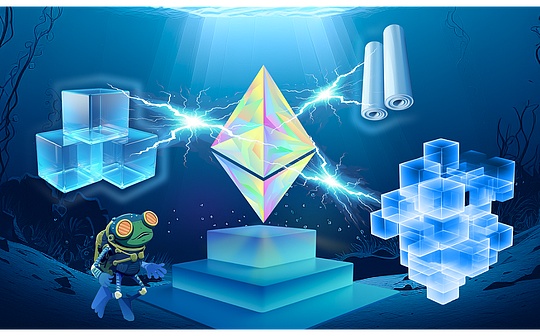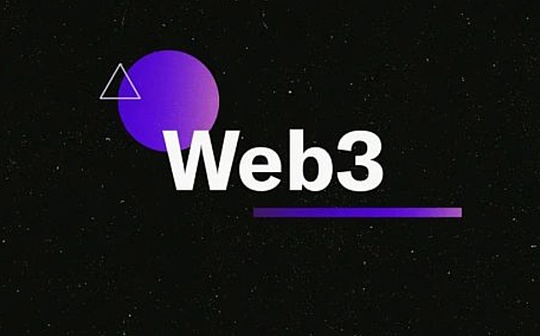
Author: Momir, IOSG Ventures Source: X, @momir_amidzic Translation: Shan Oppa, Bitchain Vision
When considering Bitcoin Layer 2 solution, I started with a simplified model focusing on three key design decisions:
1. How to bridge BTC?
2. How and to what extent is Bitcoin’s security inherited?
3. How to deal with data availability (DA) issues?
1. Bridging BTC
–BitVM Bridge: Minimum trust bridge with 1/N trust assumption would be the best solution, however there is no specific bridge specification yet, and there are some unsolved (but hopefully resolved) problems such as multi-signature operators need to provide flowsex.The optimistic forecast is that we may see a BitVM bridge appearing in at least 12 months, with the basic situation being within 24 months.
–Decentralized bridge: Economic security bridging (such as XCLAIM) is usually secure, but not very scalable.Conversely, statistical security bridging, such as large rotational multi-signature networks, currently seem to offer better tradeoffs.
–Centralized bridge: Although not ideal, they are a straightforward solution, and many bitcoin sidechains today rely on simple custodial bridges.

2. Inheriting the security of Bitcoin
This is where things get interesting.
–BitVM Programs: In theory, BitVM programs can be written to encode rules for tokens that exist only on the sidechain, and these tokens are not Bitcoin native.This not only builds a BitVM bridge with minimal trust, but also builds an actual Rollup on Bitcoin.Again, technical risks cannot be ignored, and actual solutions seem to be far away.
–PoS sidechain using Babylon: Another option is to use Babylon to build PoS sidechains.Babylon is the first solution to implement trustless Bitcoin staking, increasing the utility of BTC by leveraging BTC as the economic security layer of the new PoS chain, similar to Eigen allowing the use of ETH as the economic security layer of new middleware and infrastructure..
–Merge mining: Merger mining is another option, but original merge mining has some inherent limitations, such as the inability to enforce certain behaviors on miners.Having a hybrid mechanism that requires miners to stake on sidechains to increase engagement while giving sidechains a cut in their capabilities may be an interesting area of research.
3. Data Availability (DA)
Why is DA crucial?If we talk about optimistic designs like BitVM, users must access data in order to be able to challenge and prove malicious transactions.
Bitcoin itself has constraints, and can only store 4MB of data every 10 minutes, making it an inappropriate candidate for the DA layer (https://x.com/_weidai/status/1791134159706141117).Not to mention the unpredictability of the cost, so it is also not sure whether the data can be inserted into the next block.
If you can’t get the DA guarantee for Bitcoin, can you even have a Rollup for Bitcoin?
DA is a topic widely discussed within the Ethereum community, and some leading community members insist that nothing using external DA is not a real Ethereum Rollup.
According to the same principle, nothing that uses a non-bitcoin DA is not a Bitcoin Rollup.However, Bitcoin sidechains may have to give in here, and be more pragmatic, choosing alternatives such as Ethereum DA, Celestia, Eigen DA or DA guaranteed by Babylon.
Last point: What is the best thing for Bitcoin L1 (about choosing a settlement layer)?
In the long run, as less BTC can be mined, Bitcoin miners will rely more on organic fees or sub-income sources.In other words, to maintain a high hash rate, Bitcoin must develop a sustainable expense market.Looking at the above alternative, the solution that most positively affects Bitcoin L1 security, unexpectedly, is merger mining.
Specifically, BitVM (combined with external DA) and Babylon will not bring more transaction fees to Bitcoin miners.The former is an optimistic design and only needs to be executed on Bitcoin in a few cases, while the latter does increase the demand for BTC as an asset, but does not enhance the security of Bitcoin PoW.
Merger mining aligns well with enhanced Bitcoin security as it requires miners to compete for L1 block execution to build sidechain blocks and receive sidechain rewards.In other words, winning the next bitcoin block is the prerequisite for building the next block of the sidechain.
Summarize
With these simple modules, you can already create 18 unique side chain combinations.Assuming there is no limit on how different modules can be combined, I personally think the best combinations that may be achieved in the next two years are as follows:
– Bridged via BitVM
– Use Babylon to obtain BTC PoS security or some innovative merge mining method to extend Bitcoin PoW security
– Relying on external DAs such as Ethereum or DAs powered by Babylon








